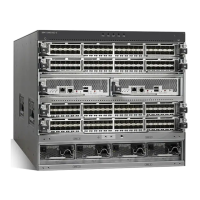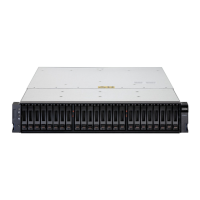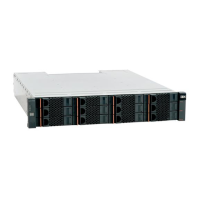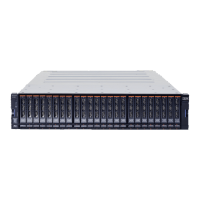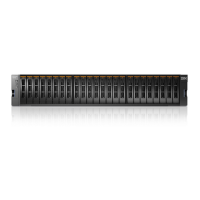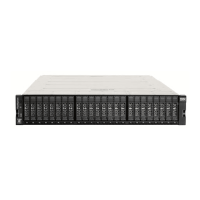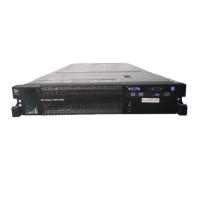c) Ensure that the insulation is not worn or damaged.
4. Check for any obvious nonstandard changes, both inside and outside the unit. Use good judgment
about the safety of any such changes.
5. Check inside the node for any obvious unsafe conditions, such as metal particles, contamination,
water or other fluids, or marks of overheating, re, or smoke damage.
6. Check for worn, damaged, or pinched cables.
7. Ensure that the voltage that is specied on the product-information label matches the specied
voltage of the electrical power outlet. If necessary, verify the voltage.
8. Inspect the power-supply assemblies and check that the fasteners (screws or rivets) in the cover of
the power-supply unit are not removed or disturbed.
9. Check the grounding of the network switch before you connect the system to the storage area
network (SAN).
10. Contact technical support if there are any issues.
Checking external devices
Ensure that you complete an external device check before you install or service the system.
To conduct an external device check, complete the following steps:
1. Verify that all external covers are present and are not damaged.
2. Ensure that all latches and hinges are in the correct operating condition.
3. Check for loose or broken feet when the system is not installed in a rack cabinet.
4. Check the power cords for damage.
5. Check the external signal cables for damage.
6. Check the cover for sharp edges, damage, or alterations that expose the internal parts of the device.
7. Check the bottom of the external cover for any loose or broken feet.
8. Contact technical support if there are any issues.
Checking internal devices
Ensure that you complete an internal device check before you install or service your system.
To conduct the internal device check, use the following steps.
1. Check for any non-IBM changes that were made to the device.
2. Check the condition of the inside of the device for any metal or other contaminants, or any indications
of water, other fluid, re, or smoke damage.
3. Check for any obvious mechanical problems, such as loose components.
4. Check any exposed cables and connectors for wear, cracks, or pinching.
Handling static-sensitive devices
Ensure that you understand how to handle devices that are sensitive to static electricity.
Attention:
Static electricity can damage electronic devices and your system. To avoid damage,
keep static-sensitive devices in their static-protective bags until you are ready to install them.
To reduce the possibility of electrostatic discharge, observe the following precautions:
• Limit your movement. Movement can cause static electricity to build up around you.
• Handle the device carefully, holding it by its edges or frame.
• Do not touch solder joints, pins, or exposed printed circuitry.
• Do not leave the device where others can handle and possibly damage the device.
• While the device is still in its antistatic bag, touch it to an unpainted metal part of the system unit for at
least 2 seconds. (This action removes static electricity from the package and from your body).
Chapter 1. Notices
11

